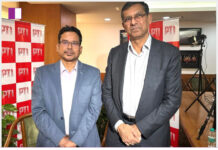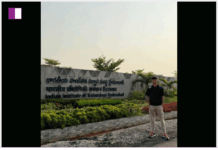The print media sector advertising revenue is expected to grew 13-15% to Rs 30,000 crore this fiscal year.
According to the analysis of print media companies by CRISIL Ratings, higher spending on advertisement by corporates in key sectors and an uptick in government ad spend in view of the upcoming state and general elections are expected to lift the revenue of the Indian print media sector.
A growing topline, along with a decline in newsprint prices, will lead to the profitability of the sector surging 1,000 basis points (bps) to 14.5% this fiscal. Accounting for over 40% of the sector revenue indicates as much. The sector revenue — split 70:30 between ads and subscriptions — had plummeted 40% in fiscal 2021 amid the pandemic. However, fiscals 2022 and 2023 saw it bounce back by 25% and 15%, respectively, as pent-up demand released by economic recovery boosted ad spend.
Naveen Vaidyanathan, Director, CRISIL Ratings, said, “Steadfast domestic demand for fast-moving consumer goods, retail, clothing and fashion jewellery, launches of new automobiles, rising preference for higher education, online shopping and growing real estate sales — sectors that contribute about two-thirds of the print media ad revenue — will keep the momentum in ad revenue growth going. Higher ad spends by the government, which contributes a fifth of the sector’s ad pie, in the wake of the upcoming elections will also push growth. Therefore, we expect ad revenue to grow 15-17%, almost reaching the pre-pandemic level this fiscal.”
The sustained recovery indicates the enduring popularity of print media in India. It benefits from low cover prices, convenience of home delivery, ability to provide original and credible content and sticky reading habits. A significant share of readers continue to prefer physical newspapers as reflected in the 8-10% growth in subscription revenue in each of the past two fiscals.
This fiscal, subscription revenue is expected to grow 5-7%, largely led by moderate revisions in cover prices. Additionally, print media companies, especially English newspapers, have started monetising premium digital content, which is seeing good traction. English newspapers have been feeling the heat of digital competition more than the vernacular ones.
Nevertheless, subscription growth has a bearing on the profitability of print media companies because of increased requirement of newsprint, the key raw material for production of newspapers. India imports more than half of its total newsprint requirement and Russia, a major source, has been at a war with Ukraine since late February 2022. Freight rates soared amid logistics logjams as the conflict intensified which pushed up newsprint prices in the last fiscal.
Rounak Agarwal, Team Leader, CRISIL Ratings, added, “The steep surge in newsprint prices sheared 850 bps off the operating margins of print media companies to 4.5% last fiscal even though revenue increased. However, newsprint prices have come down in recent months — correcting as much as 15-20% from the peak last fiscal — owing to modest global demand and easing of supply chain issues. This, along with revenue growth, should shore up margins by 1,000 bps to 14.5% this fiscal on a low base of last fiscal. Over the medium term, margins should remain healthy but below the steady-state margins of >20% seen in the past.”
That said, any significant rise in newsprint prices or macroeconomic factors affecting the sector’s growth and profitability will bear watching.






































